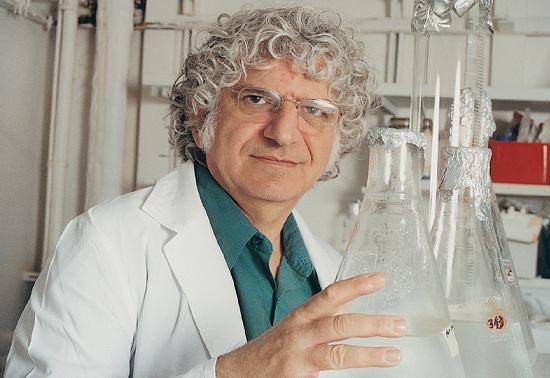Second article in a series detailing the developments that came out of the universities in Israel and will be commercialized, these developments will be presented at the Biomed exhibition June 15-17, Hotel Intercontinental Tel Aviv
Yeda, Weizmann Institute of Science
Using a DNA damage repair mechanism for cancer diagnosis

Early diagnosis of cancer may be a critical factor in the way of dealing with the disease and the possibilities of its treatment. The technology developed by Prof. Zvi Livna and Dr. Tamar Paz-Elitzur offers the possibility of early detection of various types of cancer with the help of a new and non-invasive method that relies on the activity of the OGG1 enzyme related to the body's DNA damage repair system. The researchers found that the activity of the enzyme is significantly lower in patients with lung cancer (responsible for 30% of cancer deaths) and head and neck cancer. A particularly low activity was discovered in the group of patients who smoke, who make up about 90% of lung cancer patients.
Statistics show that only about 10% of heavy smokers develop cancer because they manage to overcome the effect of carcinogens through defense mechanisms such as the DNA repair mechanism. On the other hand, a relative minority with excessive genetic sensitivity is at a very high risk of contracting the disease. In the USA this minority numbers about 160,000 new patients every year. Smokers with a low level of enzyme activity are 1 times more likely to get cancer than non-smokers with a normal level of activity. A person with low OGG1 activity has difficulty dealing with the DNA damage that accumulates with tobacco smoke, so his risk of getting lung cancer increases greatly. Stopping smoking in those people may reduce the risk of developing lung cancer. It was also found that smokers with low activity of OGG70 have a XNUMX-fold risk of developing head and neck cancer compared to non-smokers with normal activity. This method may serve as a basis for the development of a test kit that will make it possible to diagnose smokers and other groups of people who are at a particularly high risk of getting cancer.
New molecules for the treatment of inflammatory phenomena
The treatment of diseases related to autoimmune activity in the body often involves the administration of steroids which cause many side effects along with their physiological activity. Prof. Meir Shinitzky, Prof. Yaron Cohen and Raan Margalit from the Weizmann Institute of Science, identified a molecule that regulates the activity of the immune system in the body by inhibiting the secretion of various proteins that are responsible for the activation of the inflammatory response such as interferon gamma and TNF alpha. The molecule was shown to be effective in a model of psoriasis where it was applied to the surface of the skin. It also showed positive results when administered orally to several inflammatory models in mice without the side effects that are characteristic of steroid administration.
The technology is protected by a patent application and is available for licensing.
A method for identifying target proteins for cancer treatment
The recognition that effective cancer treatment involves tailoring a drug cocktail based on the needs of each individual patient is becoming more and more common today. Prof. Uri Alon developed a method that allows testing the effectiveness of various drugs and their combinations while identifying the proteins that allow individual cancer cells not to respond to drugs. The technology consists of a library of more than a thousand cells, in each of which a different gene contains a glowing fluorescent marker. When the gene is translated into a protein, it becomes luminescent and makes it possible to follow the behavior of the protein under different conditions and in response to different drugs with the help of a fluorescent microscope. With this method, individual cells can be tracked and those cells that react abnormally to exposure to a cancer drug can be identified. Tracking the behavior of the proteins in the cells makes it possible to identify those responsible for the mechanism that saves the cell from reacting to the drug compared to cells that do react to it. Administering an additional drug that damages the same proteins can increase the effectiveness of the treatment as demonstrated in lung cancer cells in Prof. Uri Alon's laboratory. The monitoring of the behavior of the library of labeled proteins throughout the test time in each individual cell is carried out automatically by a robotic system, with the large amount of information collected from it processed by automatic image processing software that identifies the surviving cells.
This technology is protected by a patent application and is available for licensing.
